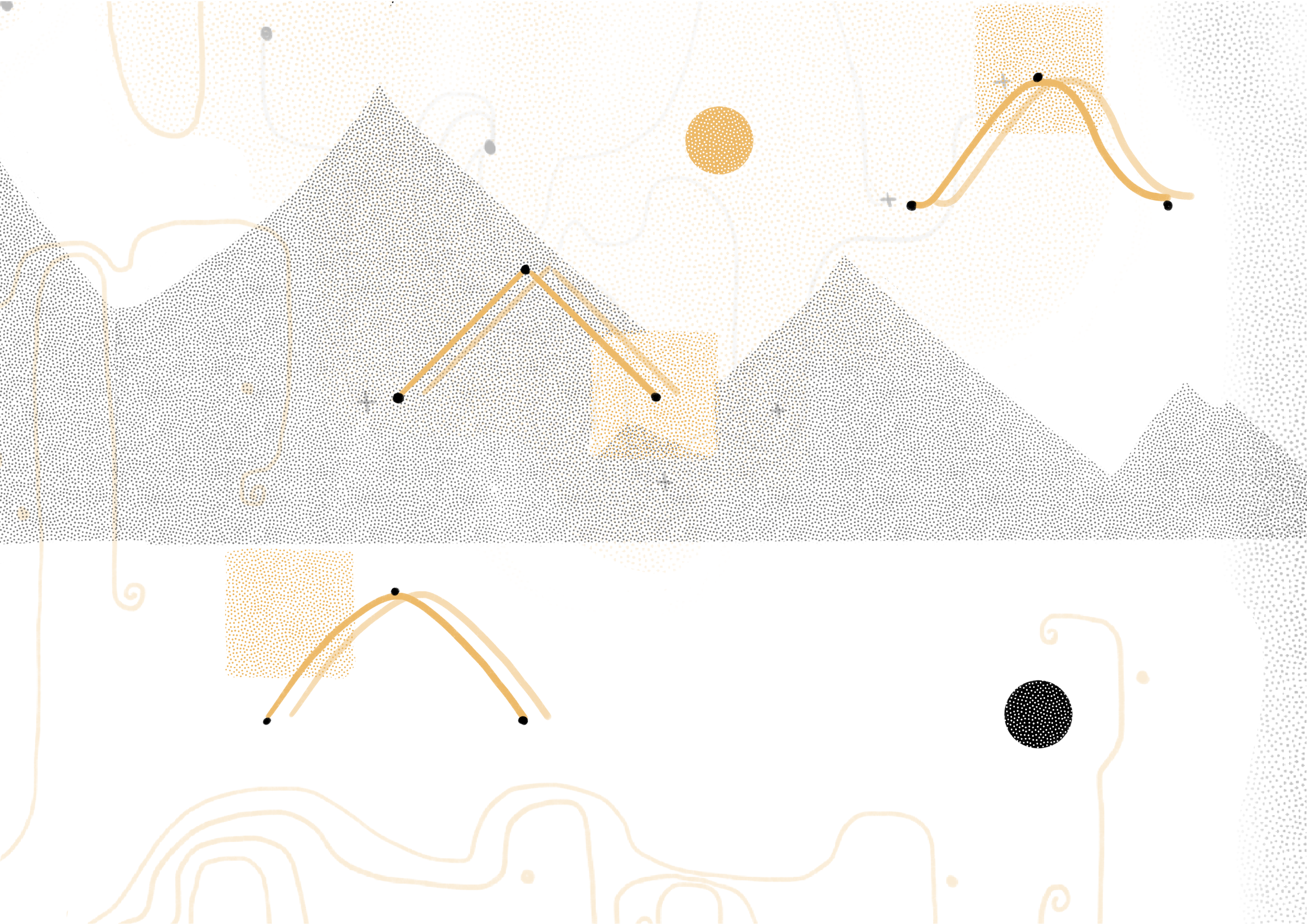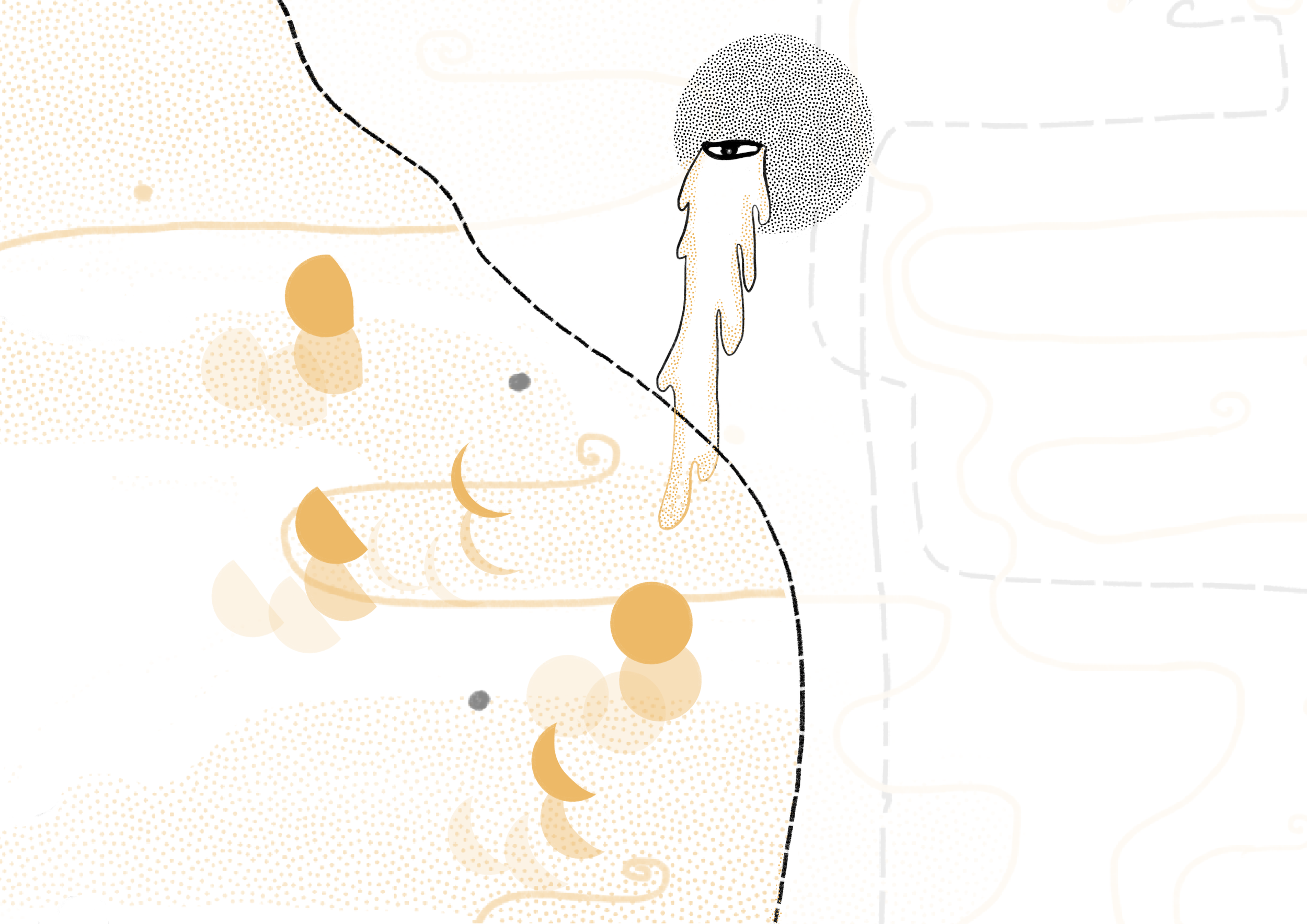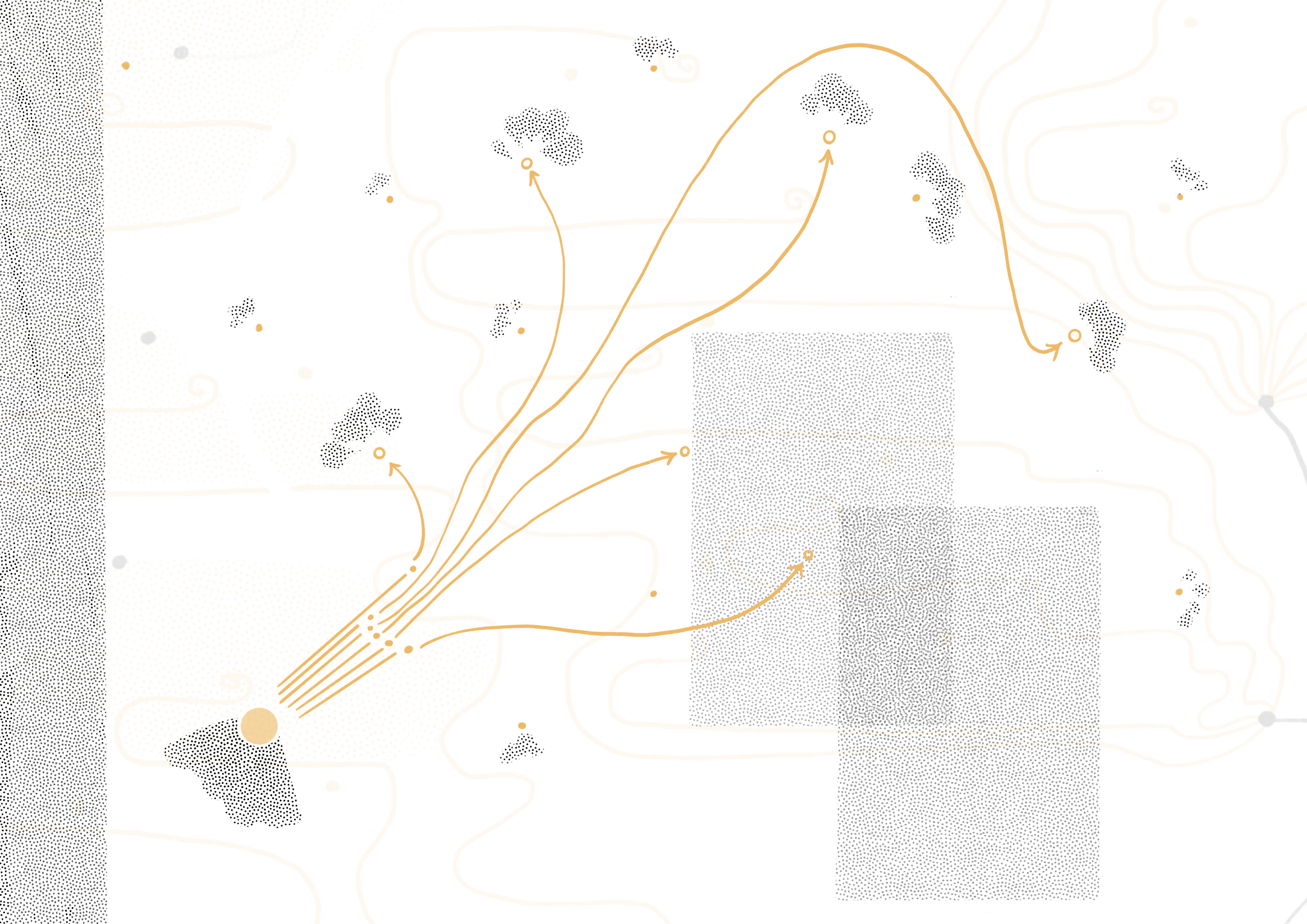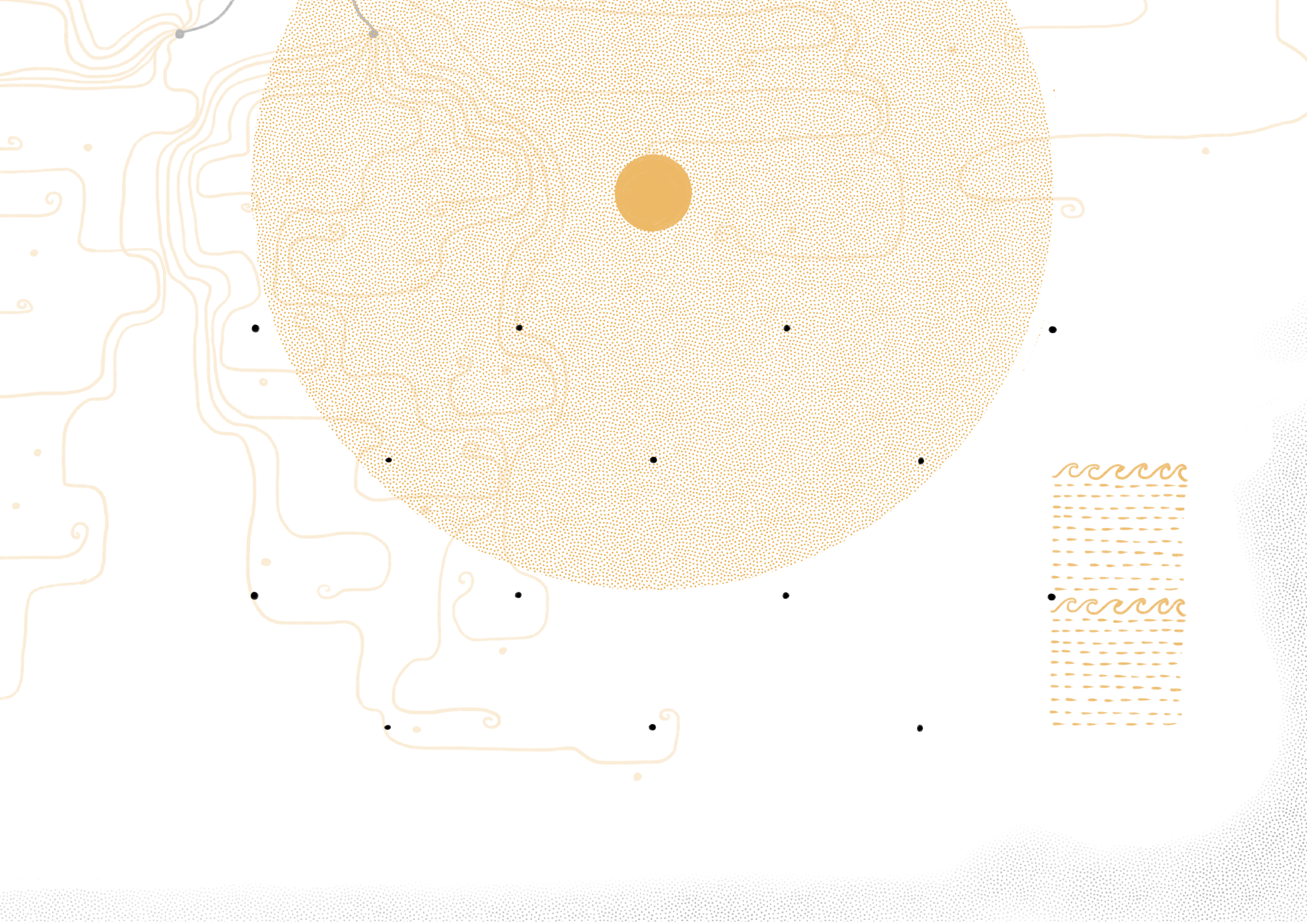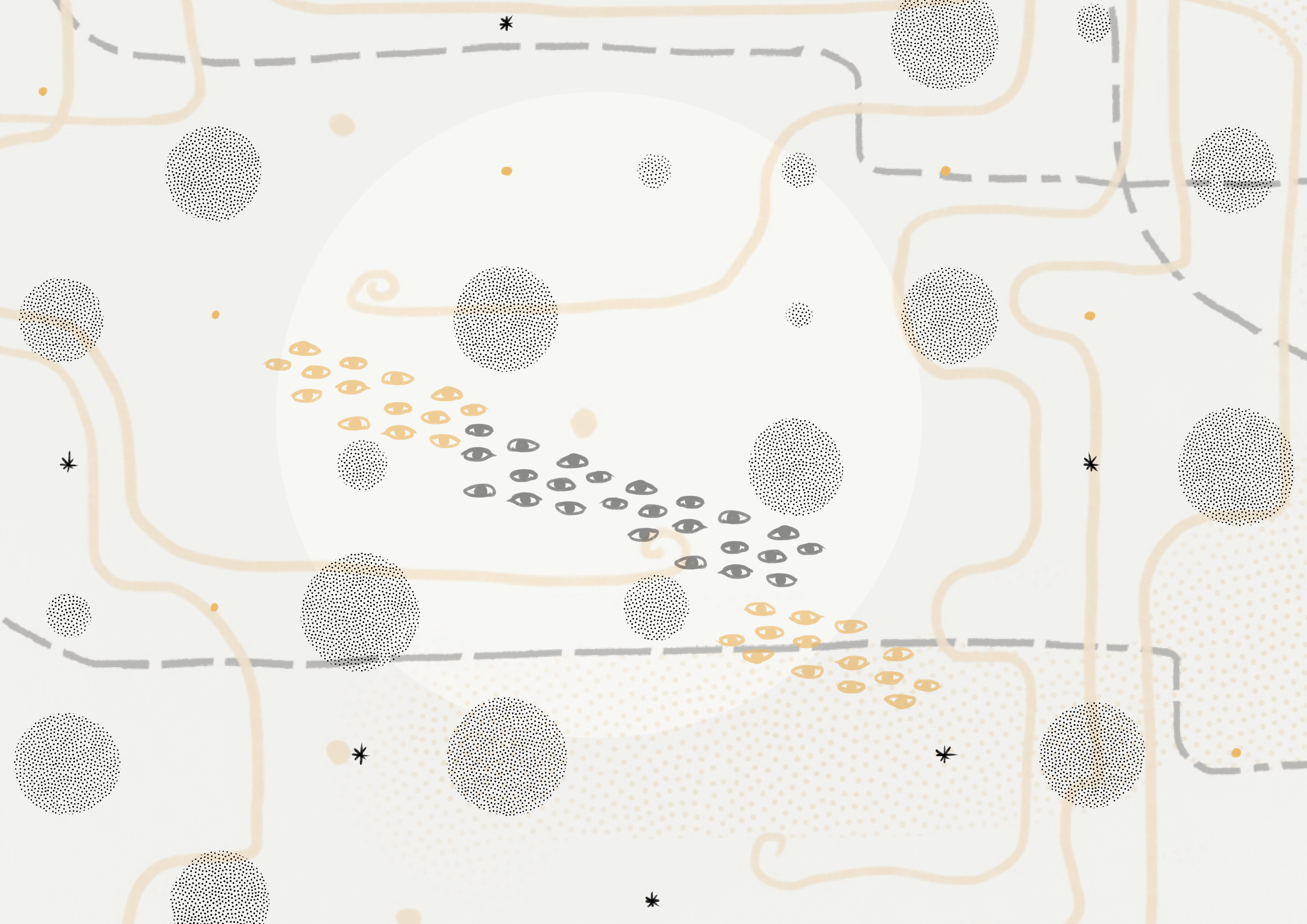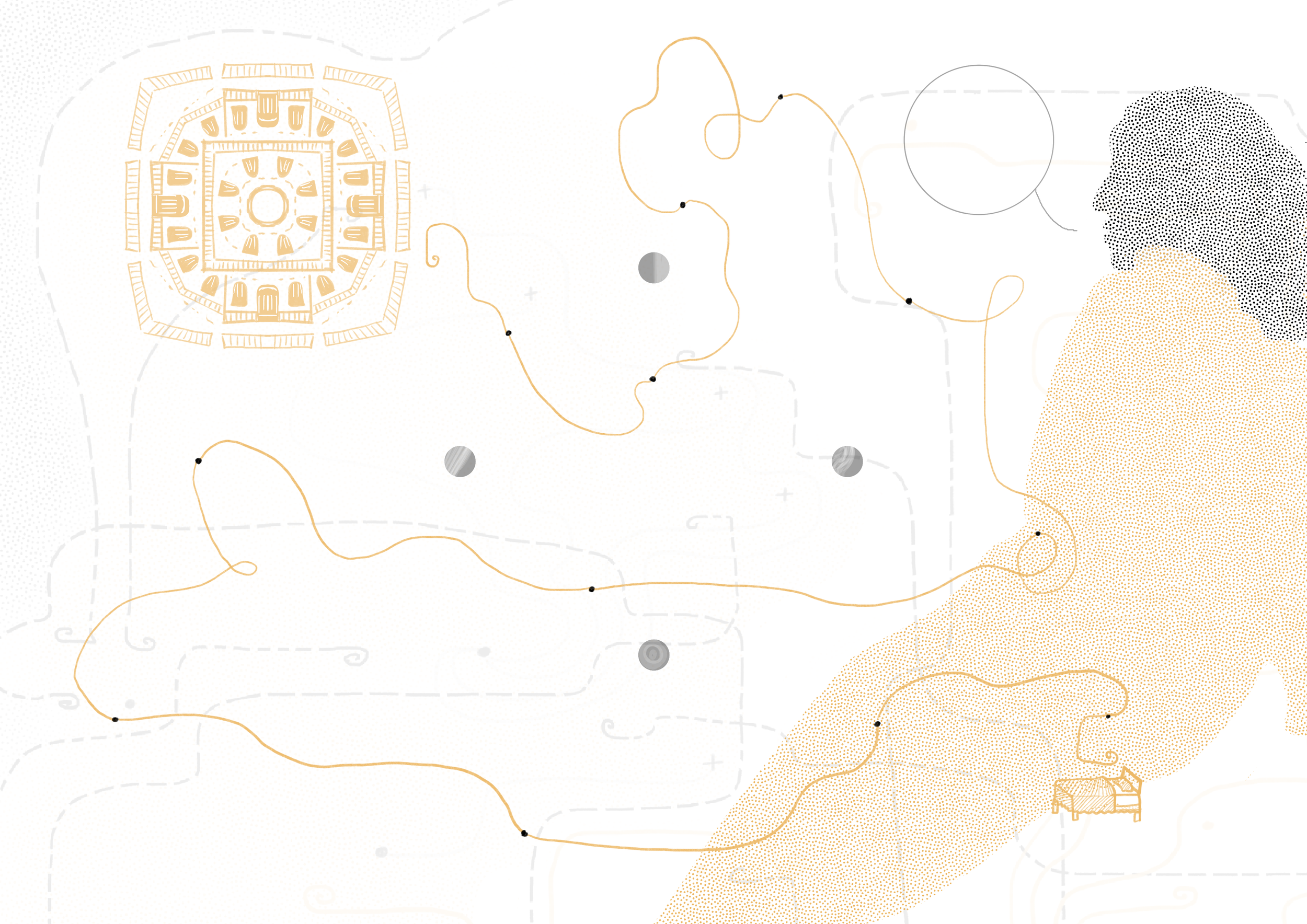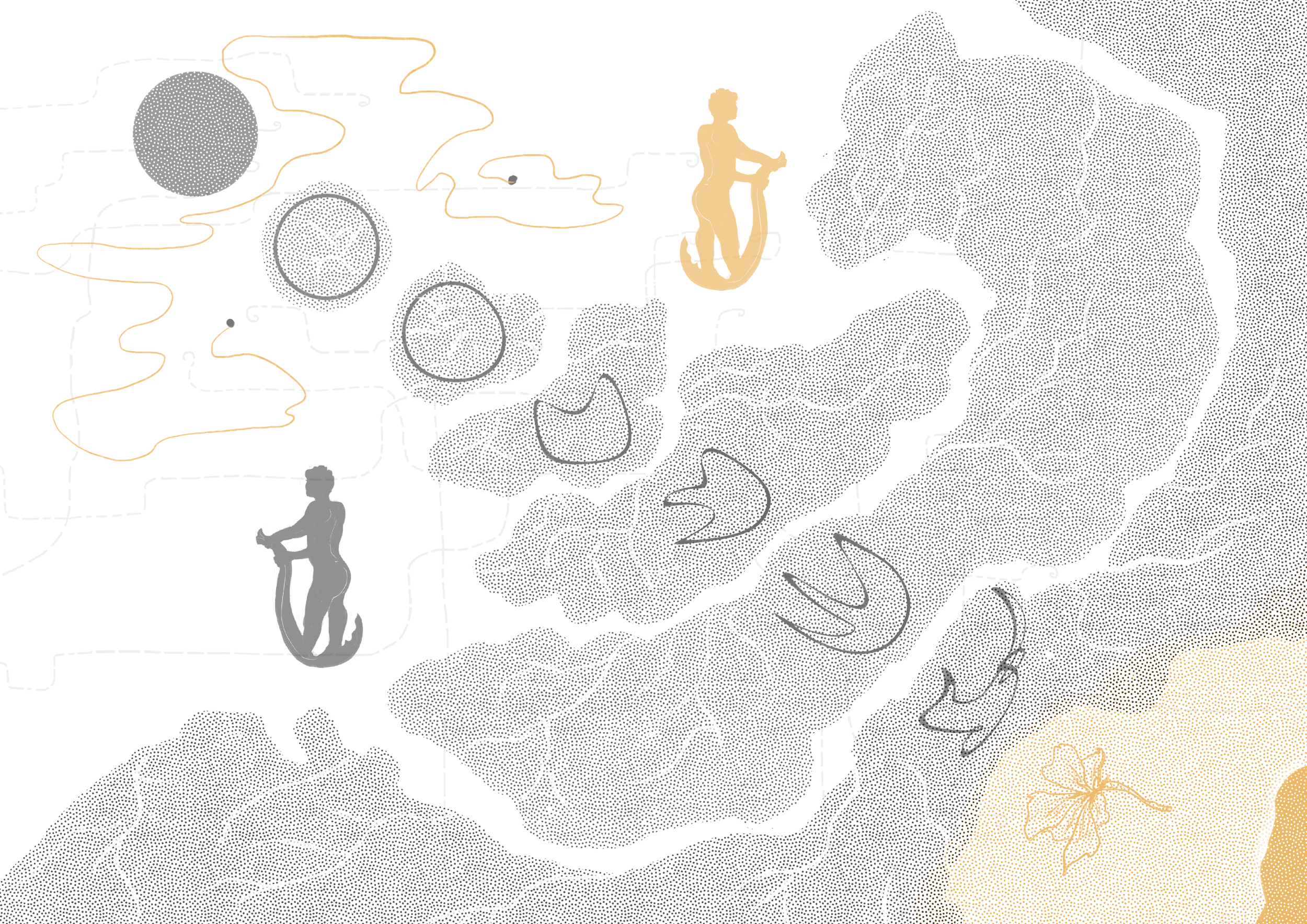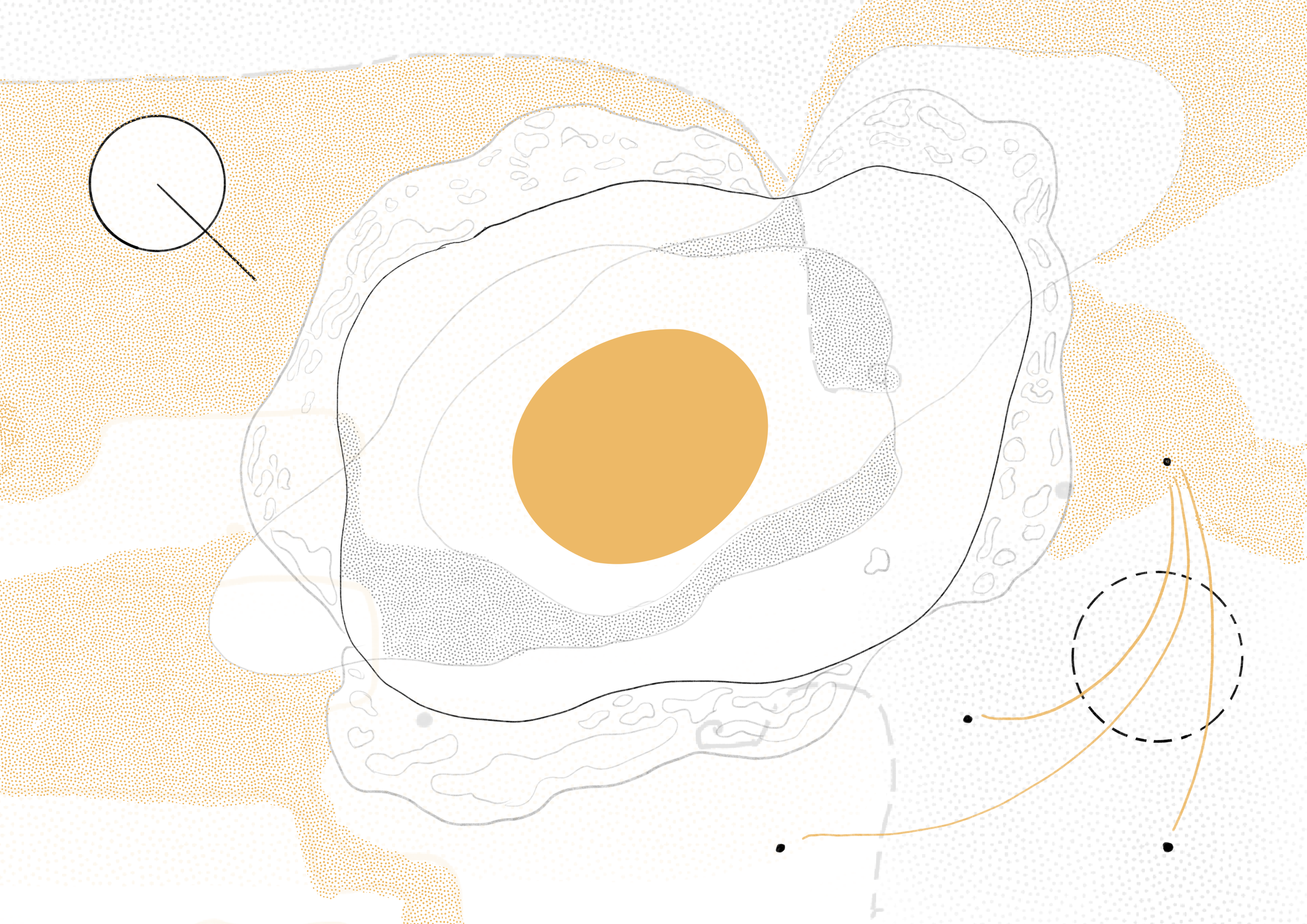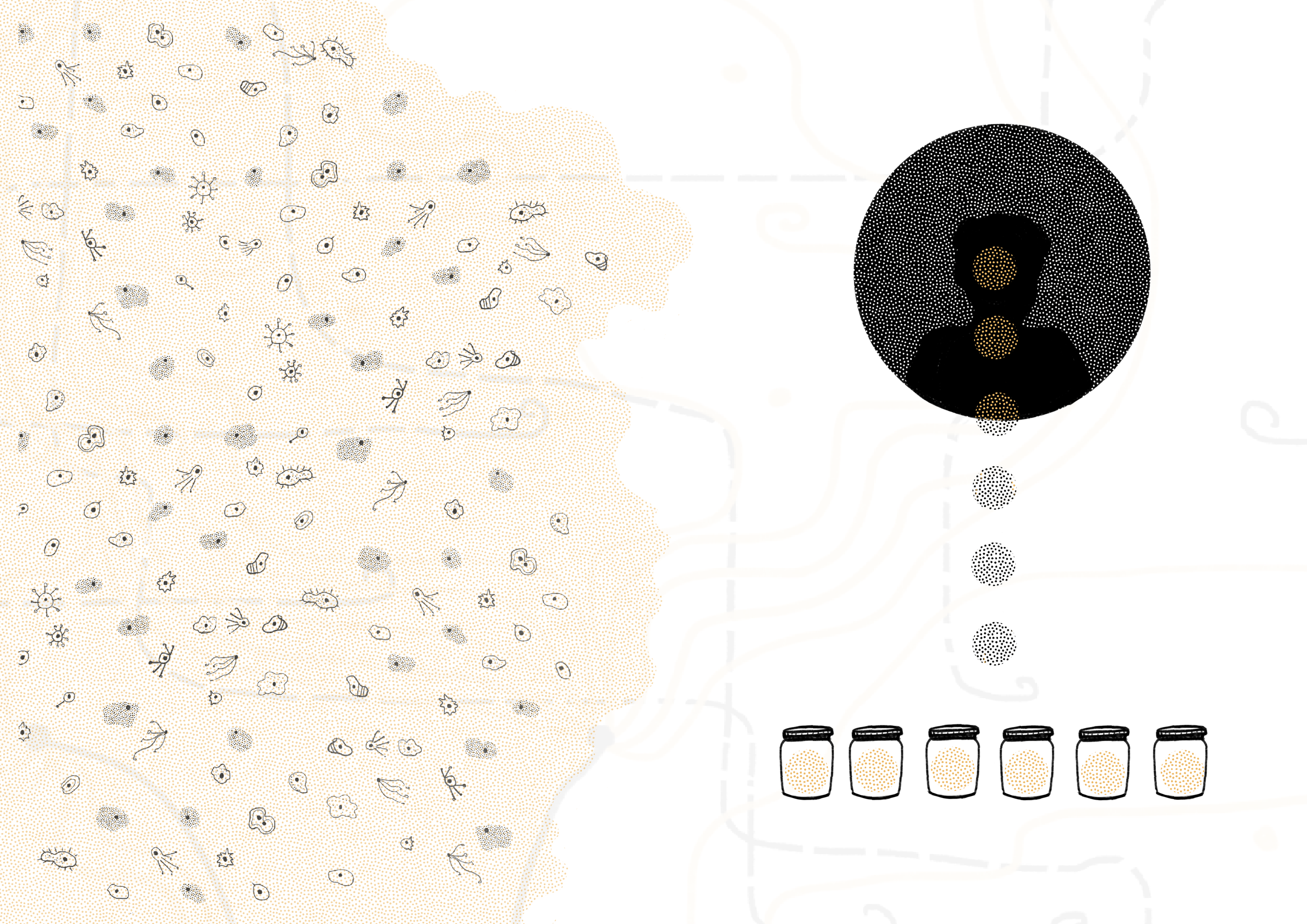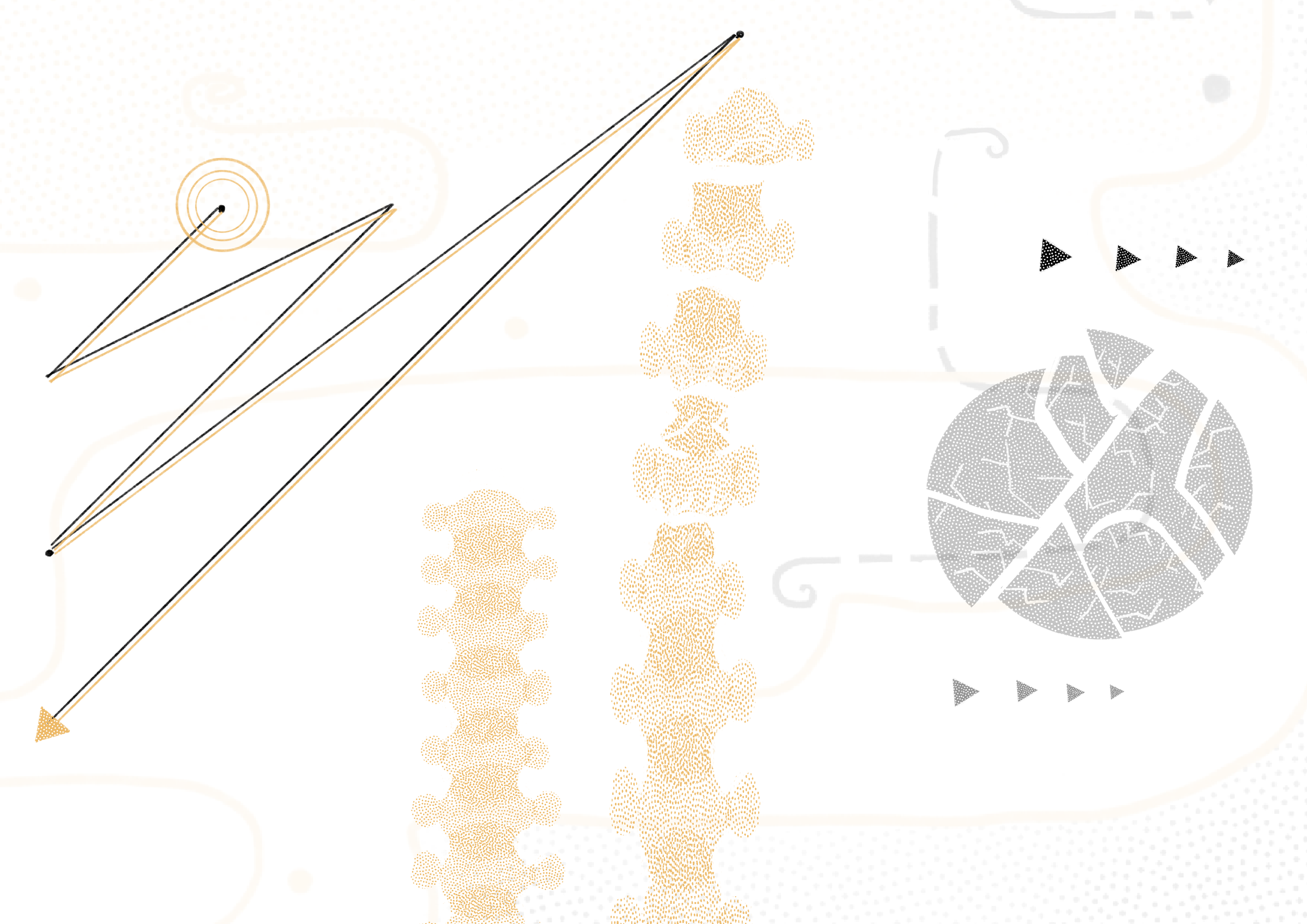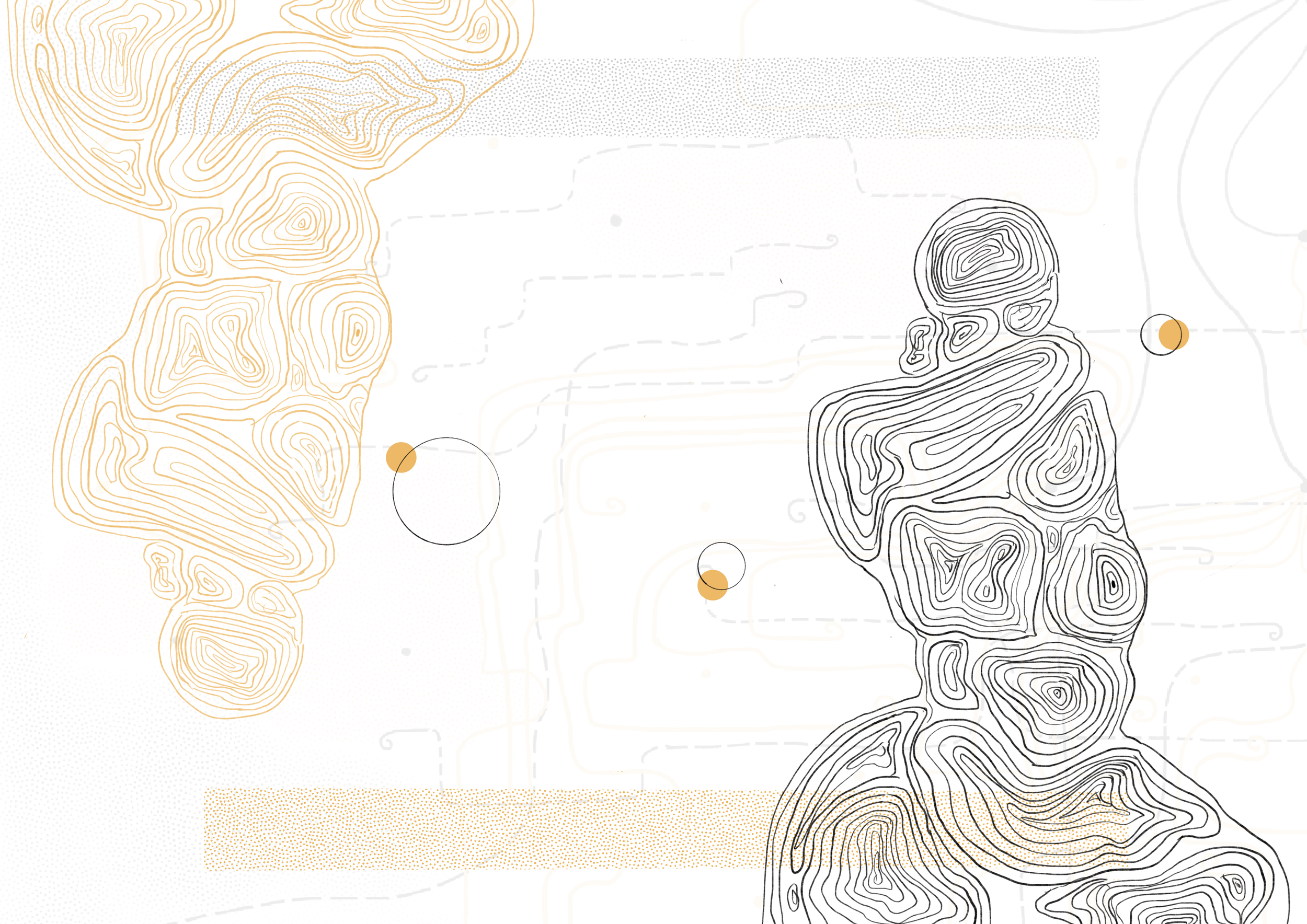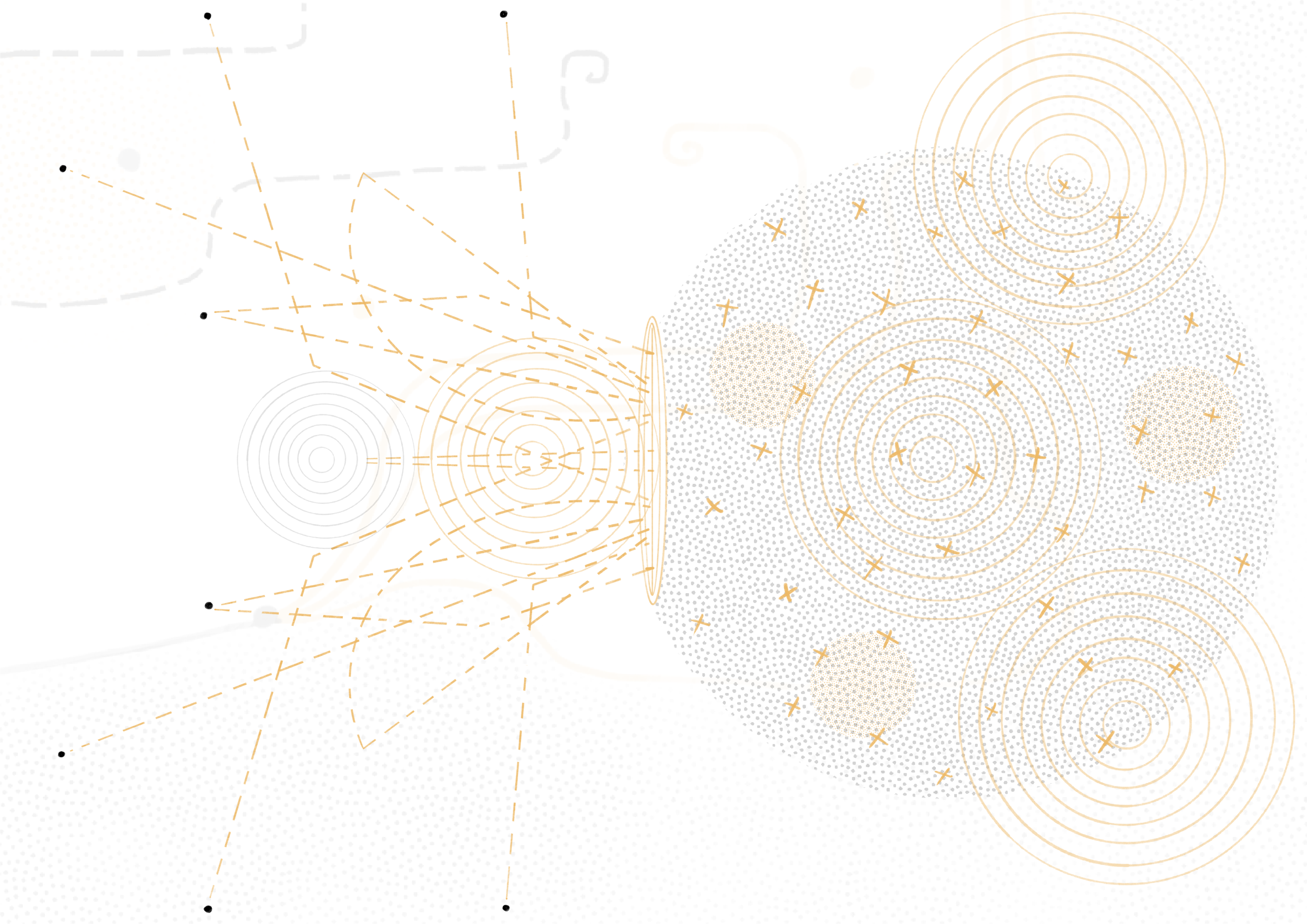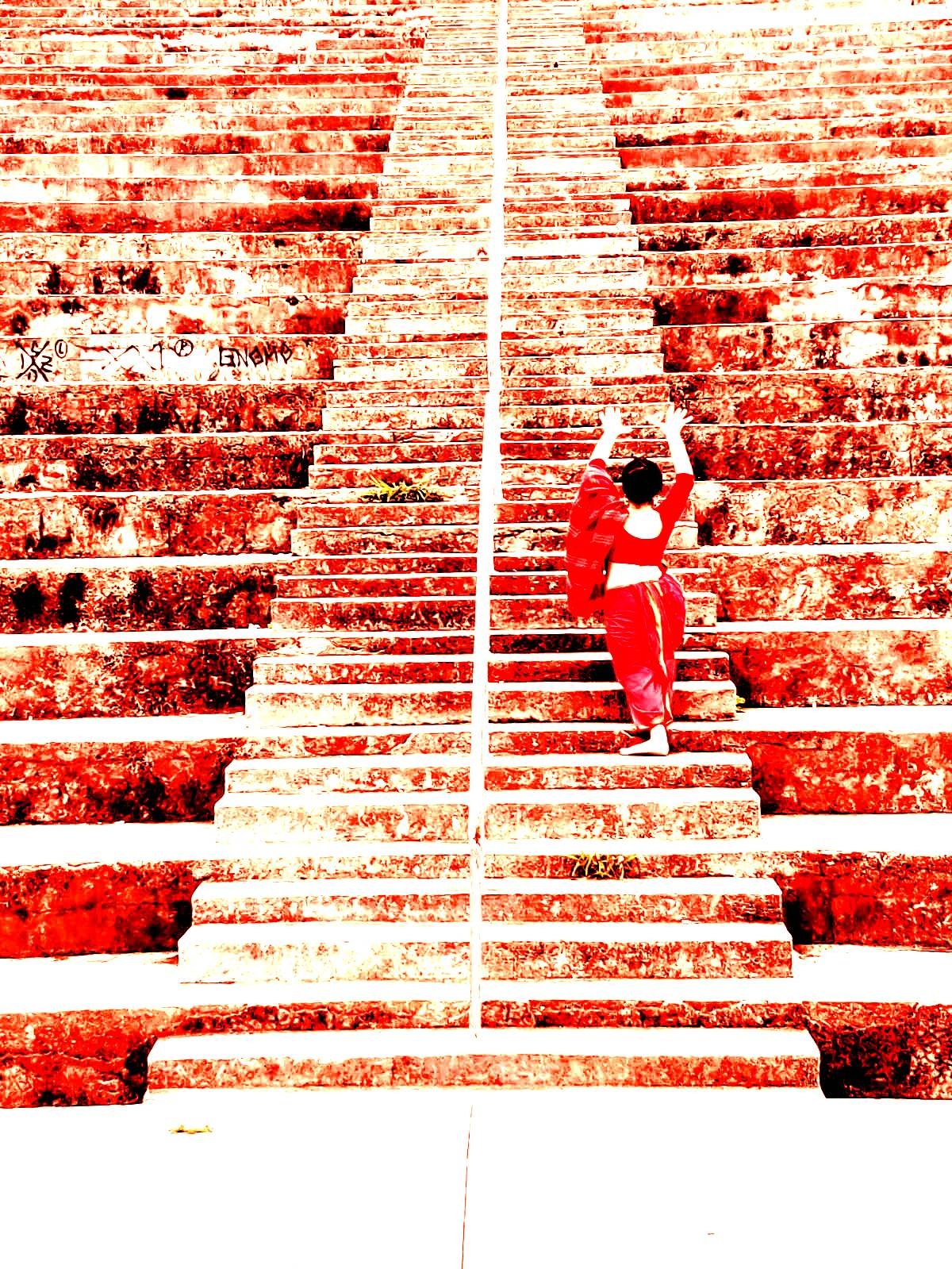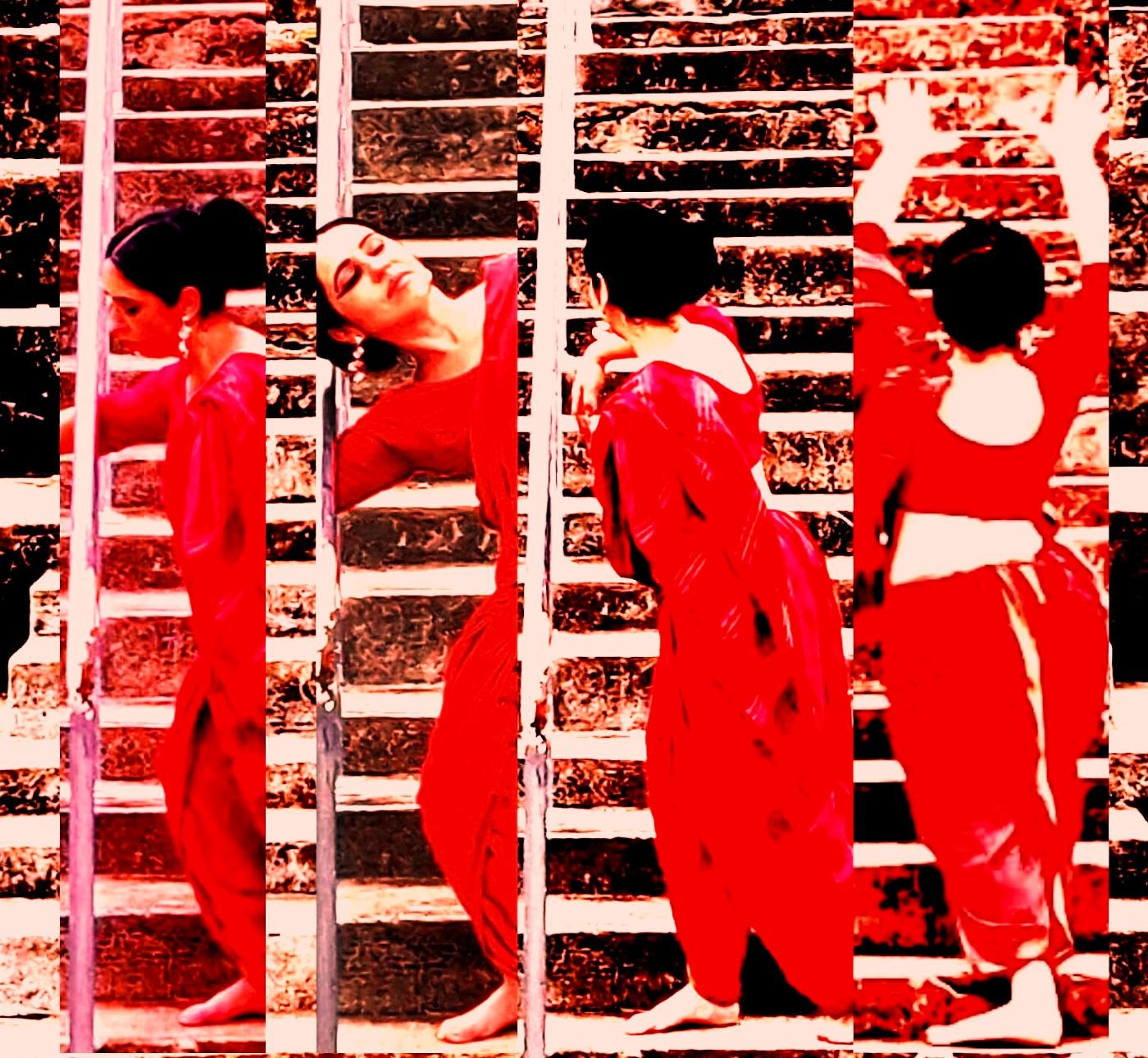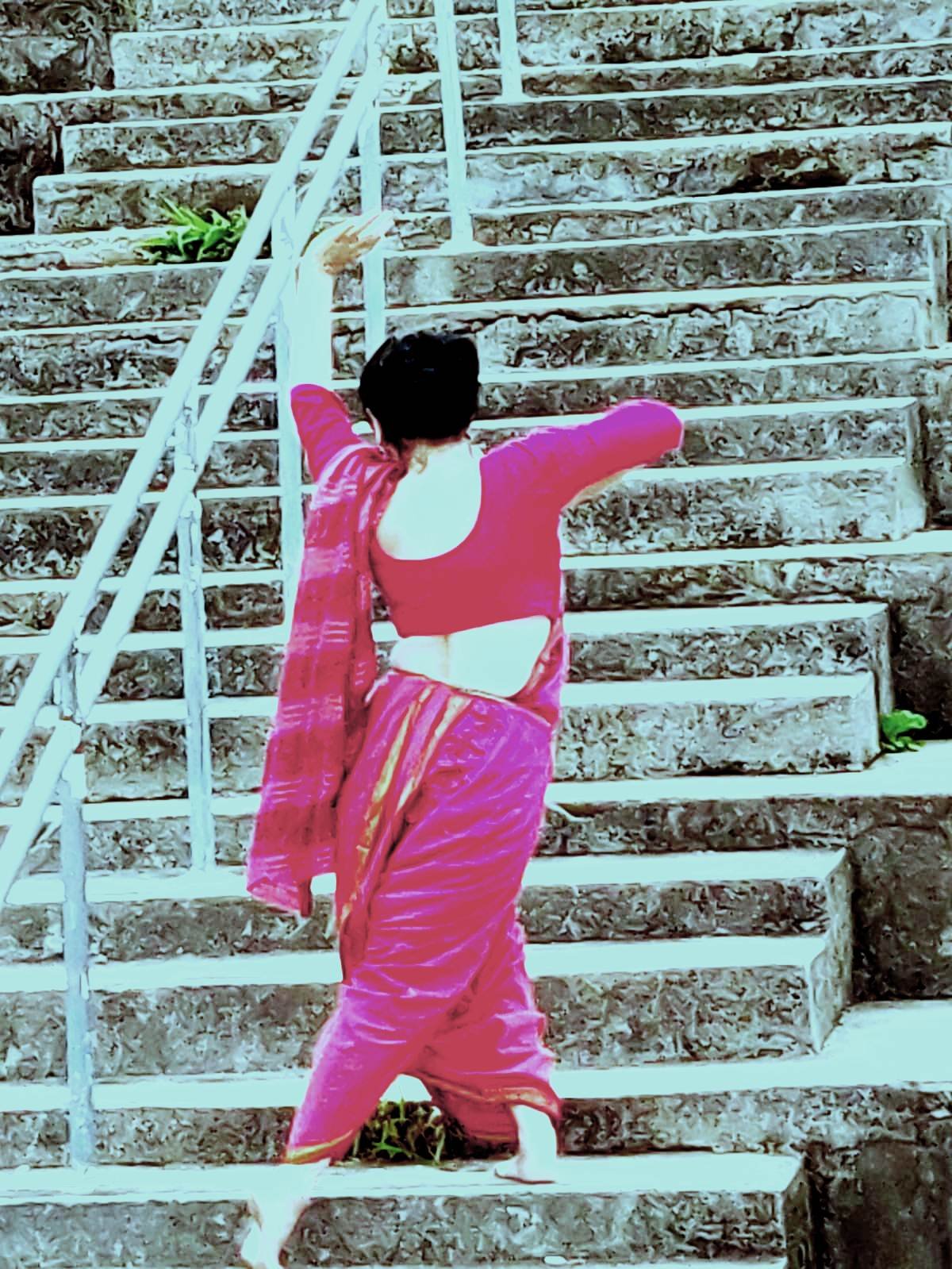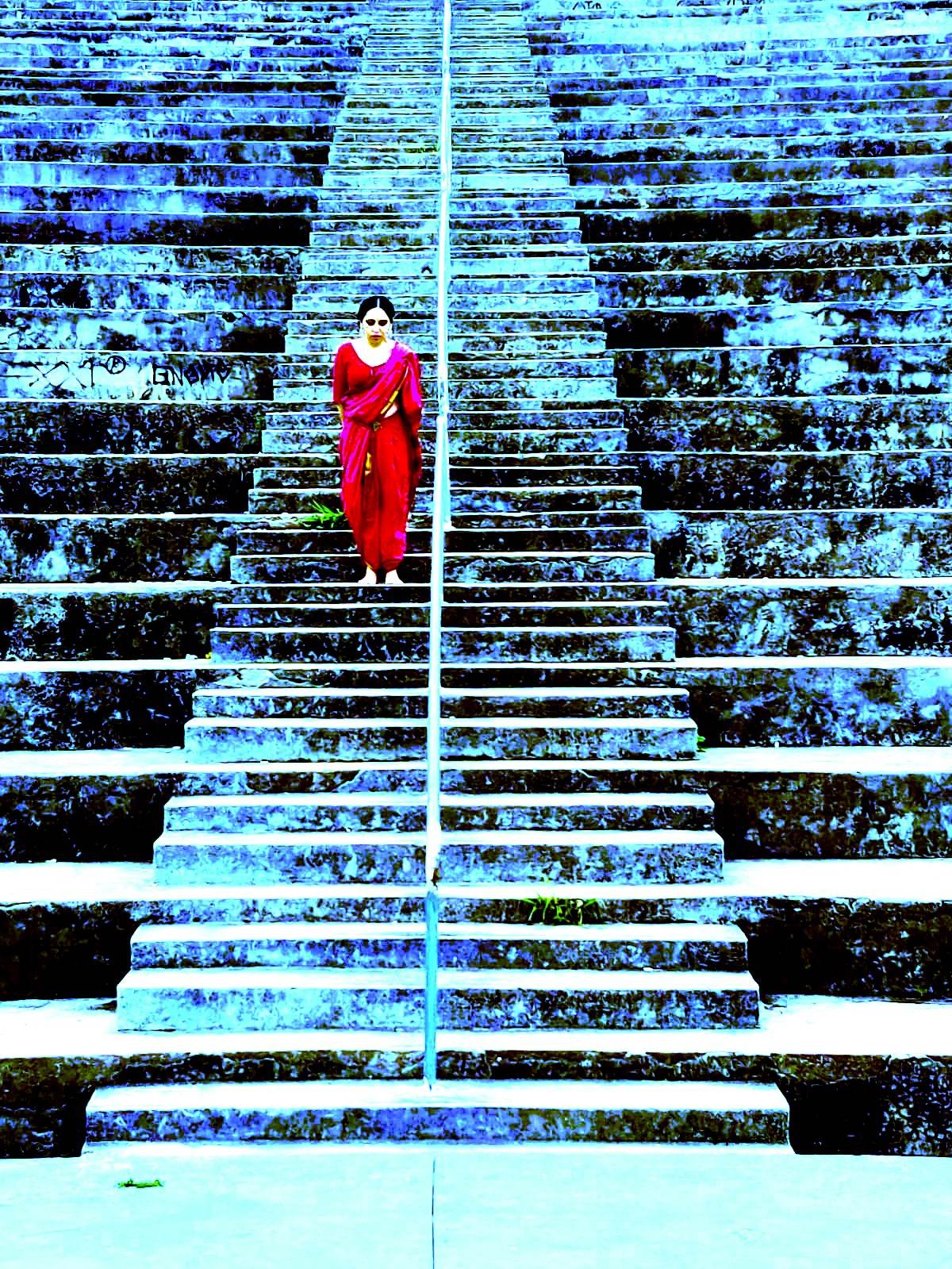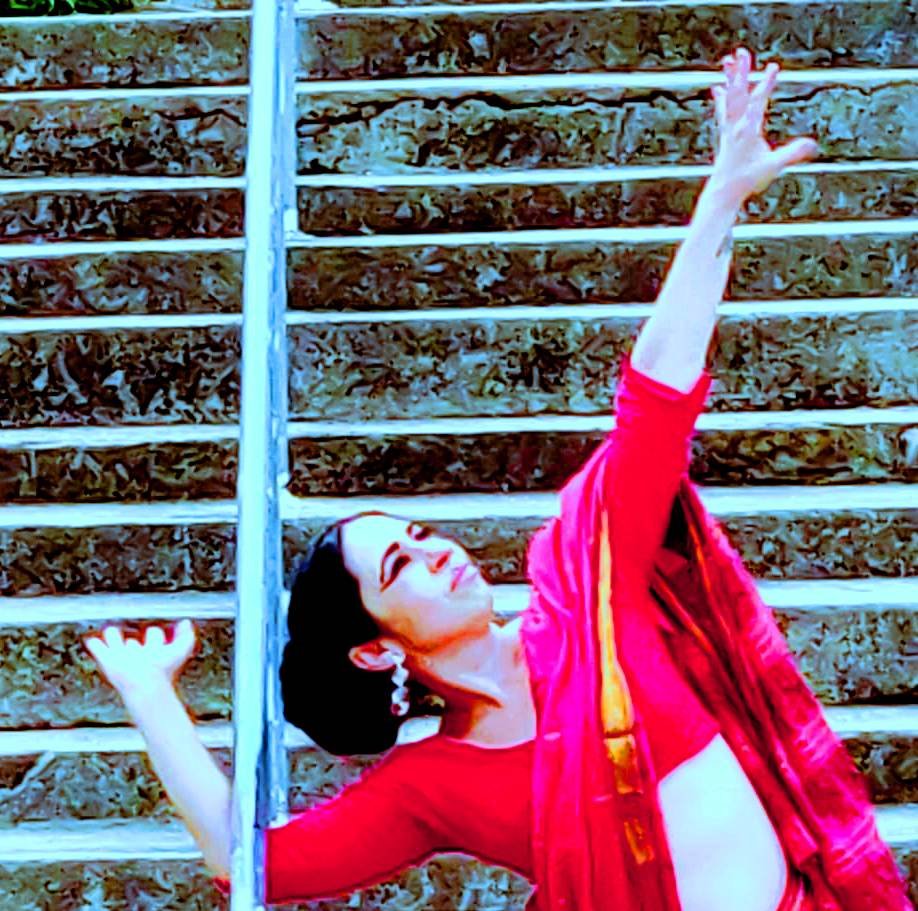Beyond and Between - Space Studies for a Diasporic Dance
Andrea Itacarambi Albergaria
Future plans
individuals joined by illusion: courage
Old past steps
ancient memories: fear
Present looking at the wind hitting the leaves: dew
and the cup of coffee upside down
to be the sludge in the air: spaces
everything is left on one side of the arm:
dust cloud mist hug (us)
I wrote this short poem in 2021 the midst of the Covid-19 pandemic, reflecting on The Dream Play (1901) by August Strindberg. In this work, characters merge into each other, locations change in an instant and a locked door becomes an obsessively recurrent image. As Strindberg himself wrote in his preface, he wanted “to imitate the disjointed yet seemingly logical shape of a dream”. Everything can happen, everything is possible and probable. From my poem Future Plans, I traced a map of research that explores through dance, specifically through Odissi, outside and inside spaces into a diasporic poetic field of creation. Thus, Beyond and Between - Space Studies for a Diasporic Dance, is a project of photography, dance and empty places, designed for exploring spaces and lasts. This is last and also my last (as measurement of my feeling, or my inner poetic, my narrative to build body work in a contemporary scene and in a multimedia landscape). The poem is about isolation, not just during the pandemic. It is about isolation in moments of solitude in the journey.
To dance Odissi or any other Indian dance in Brazil is to dance alone. Nobody knows this art, just a few connoisseurs of this finest of forms. This is the poetic diaspora. I keep resisting with the dance that I believe, that my body answers. I can feel this dance and I keep dancing even though nobody knows what this is.
To stay between and beyond, create another dance from this. This is the isolation of practicing an art totally out of context. This is my feeling. This is my measurement.
Master of Quarantine: Come on. Come and help us dance—We have to dance before the plague breaks out. We must!
(STRINDBERG, 2010, p. 151).
In Strindberg´s work, Indra asks his daughter Agnes about where she is and how she came to be there. She replies that following the path of fire and lightning, she ended up walking trails made of lightning and that the cloud, changing course, dragged her down, where the air is dense, heavy. The father then says that Agnes is falling on Earth, surpassing the limits of the different mythological skies. In addition, he asks his daughter to tell how those who live there live. Only the laments of humans are audible in the abode of Indra and the daughter, already closer to Earth, in contrast, tells her father that there are also shouts of joy, bells and lights that light up.
One may ask, “But what makes your engagement with Odissi diasporic?”. Here, I must share my idea of ‘poetic diaspora’ (not just diaspora), two Greek terms full of potency in their essence. I am not referring to the diaspora (that emerges from) flight, persecution or situations where populations move for some reason, whether hunger, subjugation or religion. I coined the term ‘poetic diaspora’ (Albergaria 2020) to describe my own diasporic experience in search of a poetics as an artist, as well as the poetics of Odissi dance, which arrived in Brazil, not through the installation of an Indian community, but through dance itself - tours by Indian artists, anthropological theatre (Barba, 2012; Schechner, 1996) and through artists who went to India for the technique and complexity of this art. I am one such artist.
This work Beyond and Between reflects this aspect of my dance work. You can find some aspects of Odissi in it if you are an Odissi Dancer. But if you are not one, you can see a flowing dance. The colours, the aharyam (ornamentation and costume), some patterns of Odissi, or some charis (gaits or walks across space) with sculptures of alasa kanyas (women in attitudes of languor) in displacement are present. But at same time, where are they heading to now? They can disappear, they can multiply themselves or they can follow people walking to or from some place.
This video dance was produced during the height of the Covid-19 pandemic. It was my way of delving in - between faith and an unexpected future. From this, I have reached beyond…
And from there my inquiries emerge:
How is it possible to survive, from ourselves
if not through movement?
Filling spaces, flowing, going beyond,
being in the middle of questions and certainties?
How can my dance flow through this situation - in isolation - where multiplicities come and go, in a battle with my thoughts?
How can I look outside and not suffer with worldly chaos?
Is there any other border for a contemporary body and mind?
Is there any other kind of division that I couldn't go into?
Which of us will keep dancing after all?
Creation and performance: Andrea Itacarambi Albergaria
Photographs: Max Carniel
Music (morchang): Edson Fernando
Brazil 2021
References
ALBERGARIA, A. I. Mudras: o gesto da dança indiana Odissi como caligrafia corporal na cena contemporânea. Curitiba, CRV, 2020.
BARBA, Eugenio; SAVARESE, Nicola. A Arte Secreta do Ator – um dicionário de antropologia teatral. São Paulo: É Realizações, 2012.
SCHECHNER, Richard e LIGIÉRO, Zeca (org). A estética do Rasa. Performance e Antropologia de Richard Schechner. Rio de Janeiro: Mauad X, 2012.
__________________; The Future of Ritual: Writings on Culture and Performance. London and New York. Routledge, 1995.
STRINDBERG, August. ‘The Dream Play’, Plays by August Strindberg, New York, Charles Scrribner’s Sons, 1912.
Andrea Itacarambi Albergaria is a Brazilian Odissi dance teacher, performer, writer, and also a PhD Student in the Performing Arts Program and a member of the Intercultural Studies Group, Arts Institute - University of Campinas, Brazil (Coordinator Prof. Dra. Mariana Baruco) with the collaboration of University of Pondicherry (India), Performing Arts Department (Coordinator Dr. Prof. RK Ravivarma) . Her Diasporic Poetic concept of dance research comes from her autoethnographic process of creation, from pedagogy up to live performances as well as creation.
